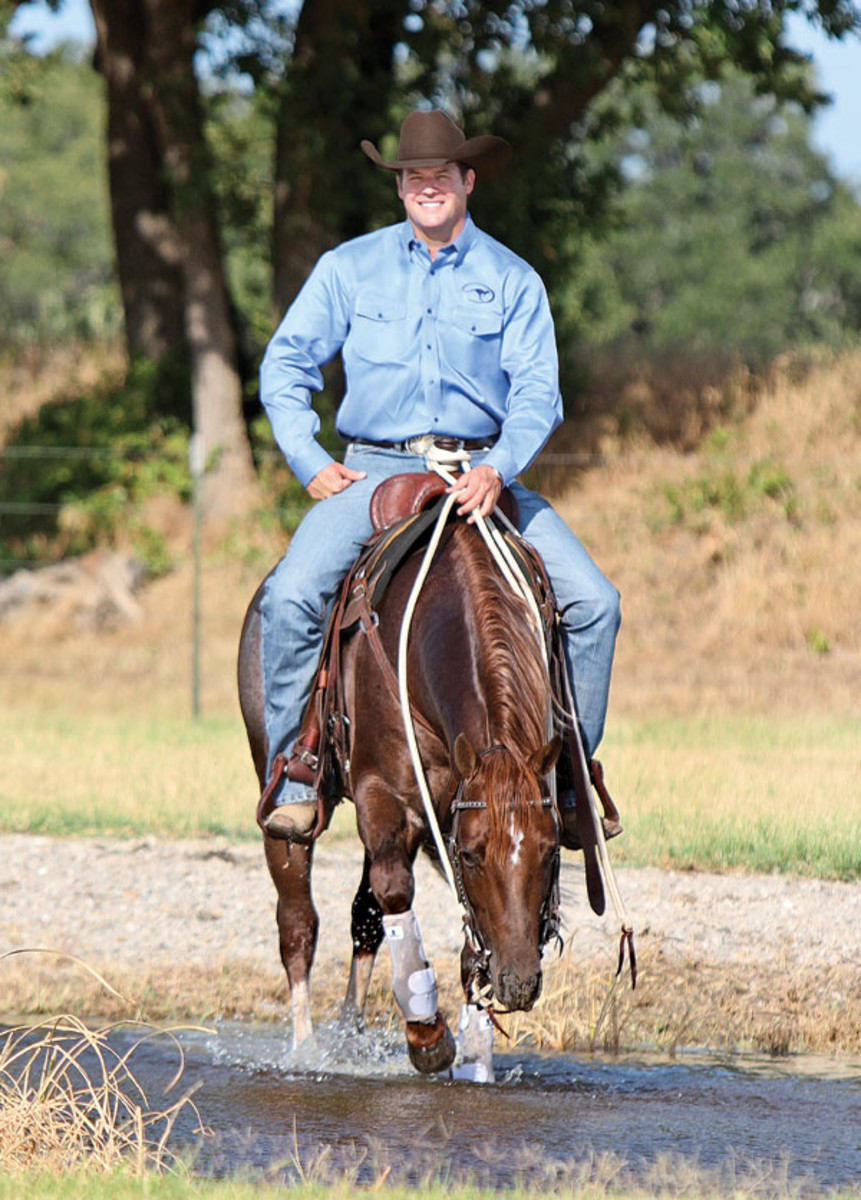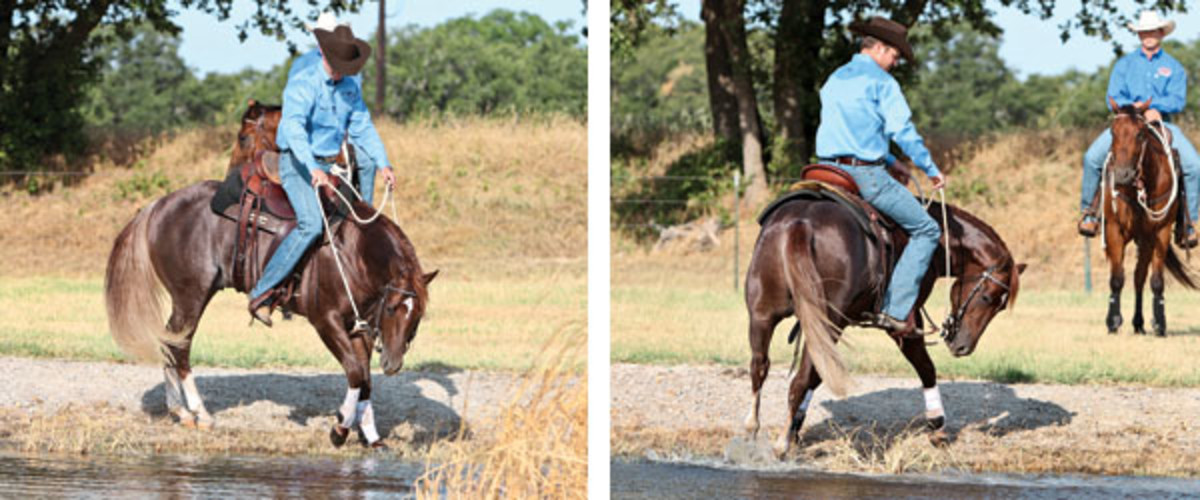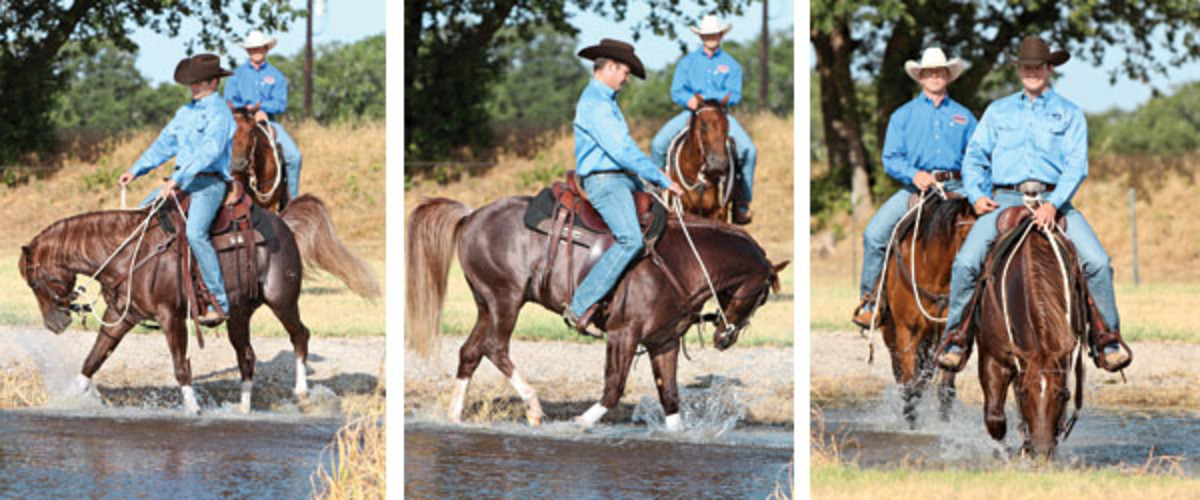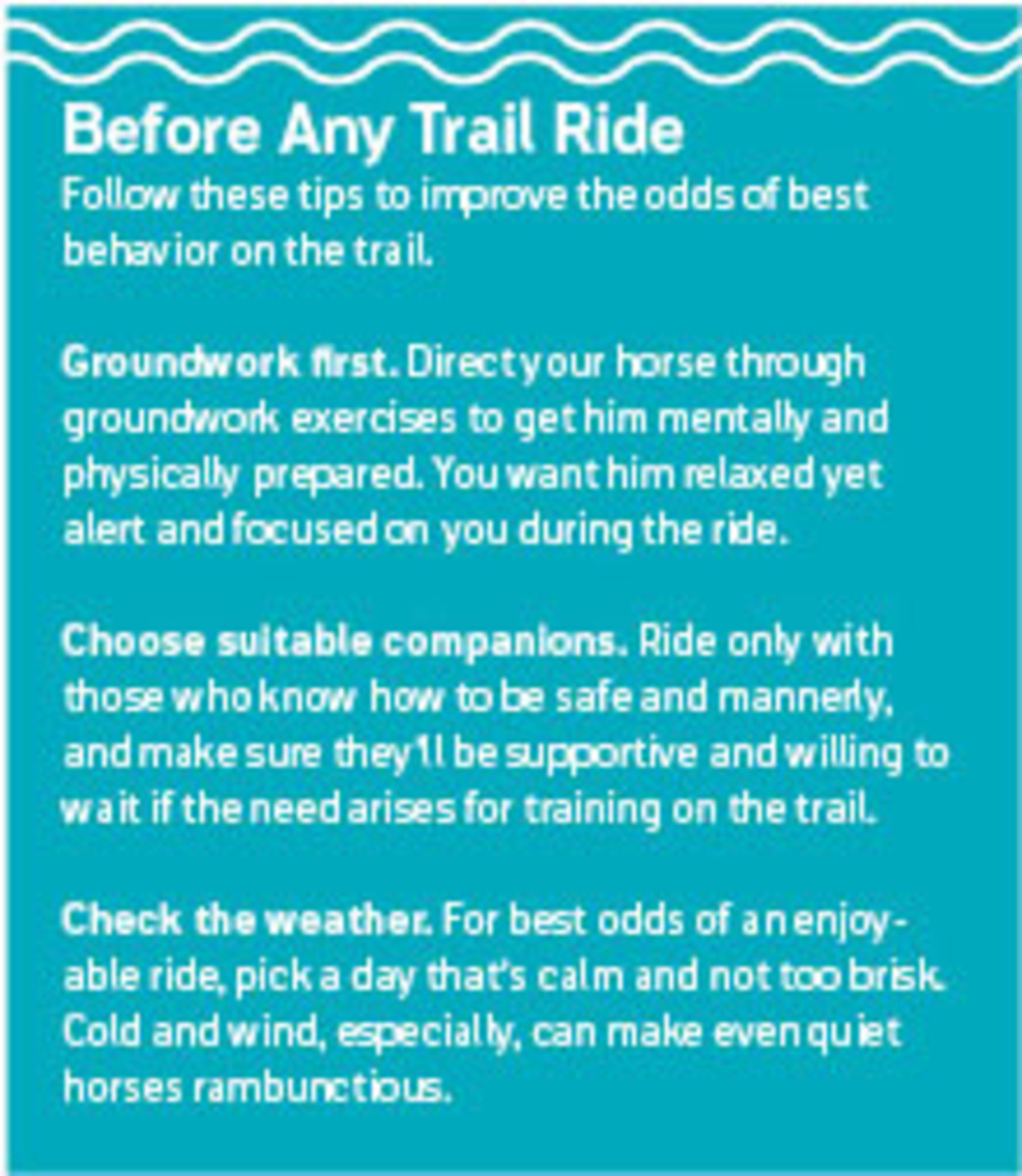Is your horse afraid to cross water? He has good reason. Nature tells him to protect his legs from the unknown, as a lameness-causing injury can separate him from the herd and turn him into a lion’s lunch. So, all things considered, he’d rather stay high and dry, thank you very much.

You can, however, condition him away from this fear. With my method, instead of fighting to get him into the stream or puddle, you’ll keep his feet moving, which activates the thinking side of his brain. That helps him stay calm and focused on you as he gradually realizes what you’re asking isn’t going to hurt him.
You’ll circle and turn him at the water’s edge, allowing him to retreat whenever the pressure becomes too much. He’ll acclimate to the idea in degrees, eventually overcoming his fear and stepping at first just a little, then a bit more, then all the way into the water.
Why This Method Works

“Approach and retreat” avoids a battle of wills. If you just try to boot your horse into the water, he’ll simply plant his feet and resist, or try to escape by rearing or bolting. Petting him while he stands dithering at the water’s edge just rewards him for not going in. By moving his feet instead, you keep him loose and listening to you until, almost by accident, one foot touches the water—and he discovers it’s no big deal. When you behave nonchalantly about his getting into the water, it takes the pressure off so he can learn.
Steps to Getting Him In
When you come to a small stream or puddle that your horse doesn’t want to cross, ask your riding partners for their patience, then follow these steps.

Circle up. Walk your horse calmly toward the water. The moment he balks, turn him away from the water and trot him briskly in a small circle, first one way, then the other. Change directions frequently. While he’s busy moving his feet, gradually bring the circles closer to the water—almost as if by accident.
If he won’t come within 20 feet of the water’s edge, that’s fine; start there and just keep working. This part may take some time, so be patient. Stay calm and relaxed as you work your horse. You must wait him out; eventually boredom and the effort he’s expending will convince him that moving closer to the water is a good idea.

Don’t push; ‘retreat.’ The first time a hoof lands in the water, it may be by accident because your horse is so busy circling and turning. That’s fine. What you don’t want to do at this point is urge him on; instead, turn him away from the water and keep circling. This “retreat” keeps the pressure low and your horse willing to continue. Make it almost like a game, as if you don’t really care whether he gets in the water or not.

If he pauses and lowers his head to sniff the water, let him, but—again—resist that strong urge to push him in. Keep circling! Let him know that although you’re not going to force him into the water, you are going to insist that he keep working briskly.
Enter in stages. Once he’s stepped in the first time, he’ll eventually step in again, a bit farther each time. That’s great—just keep bringing him back out and circling around. As he discovers the footing is safe and nothing awful happens to him, his confidence will increase and the water will cease to be a big deal.

Reinforce success. Once you do get him all the way in and he walks calmly out the other side, immediately turn around and go back through. Keep going back and forth until he’s completely relaxed doing so, even if it takes dozens of times to accomplish. Now is when you want to imprint firmly in his mind that when you ask him to cross, the water will be safe.
Clinton Anderson is a clinician, horse trainer, and competitor. Learn more about his clinics, appearances, and educational materials at DownunderHorsemanship.com. Catch his “Downunder Horsemanship” program (filmed at the ranch in Stephenville, Texas) on RFD-TV or at DownunderHorsemanship.tv.






